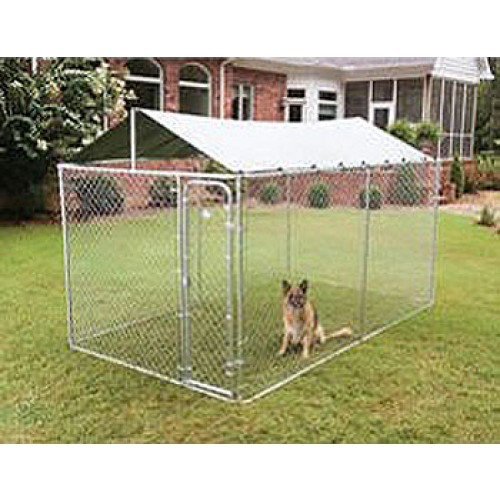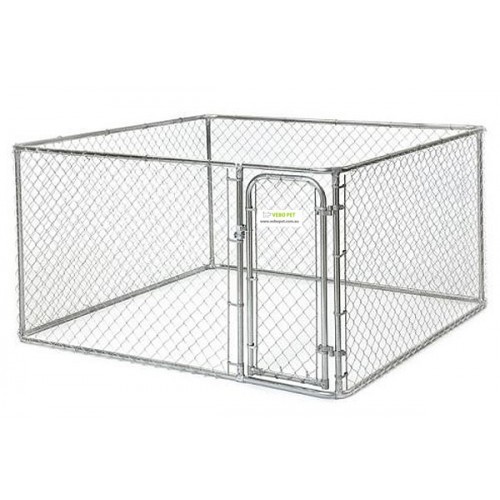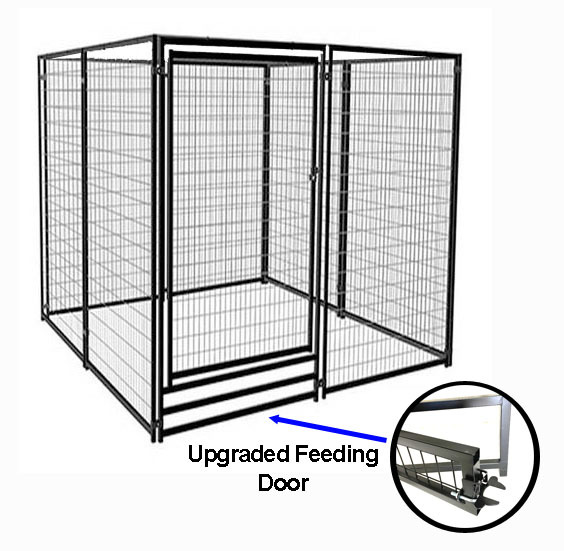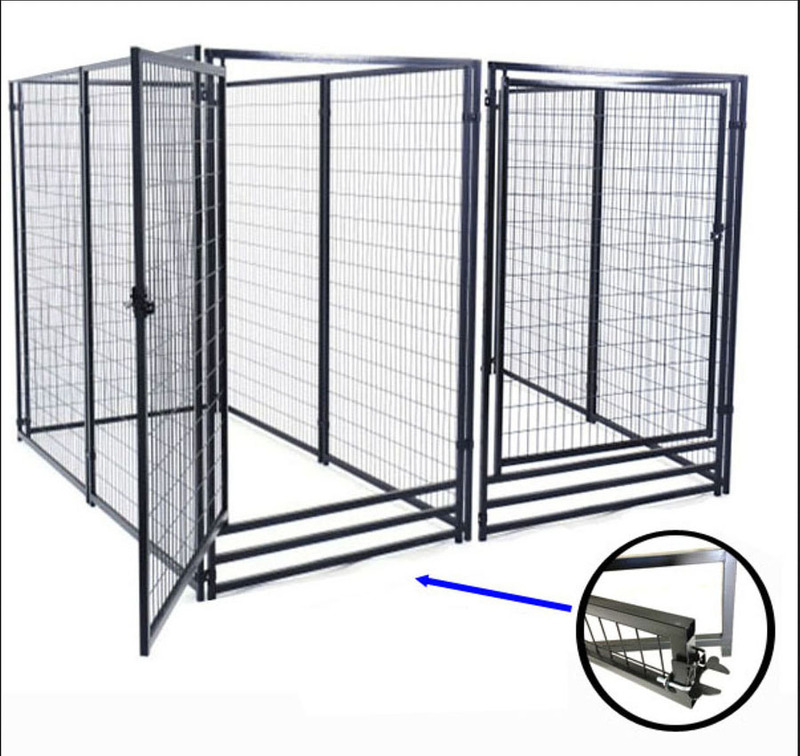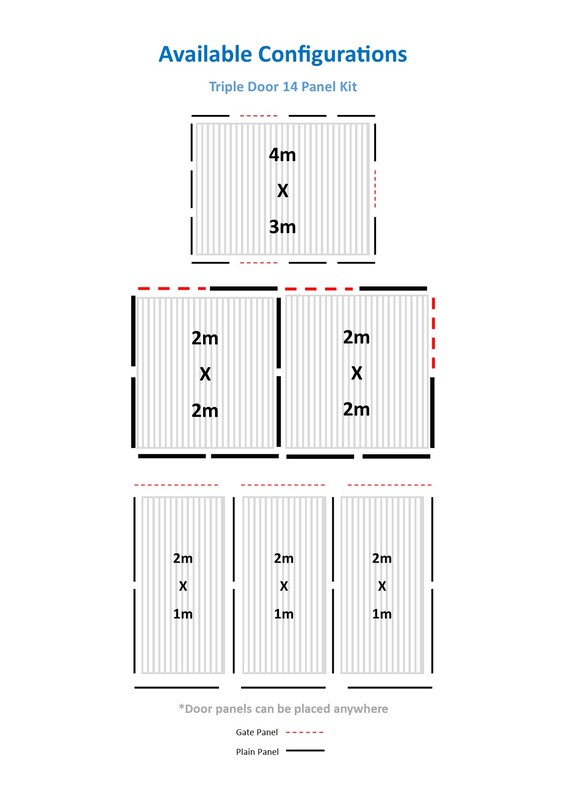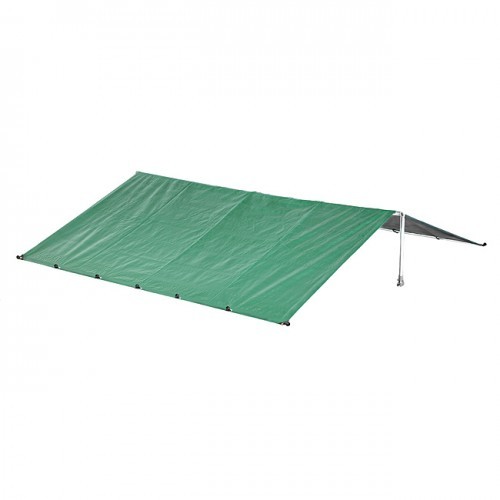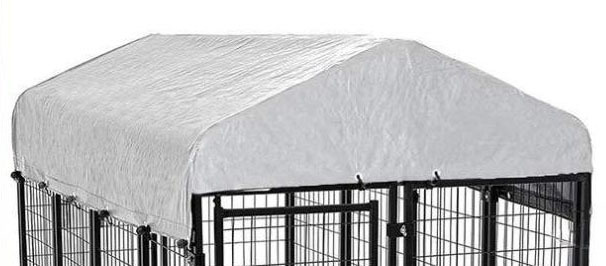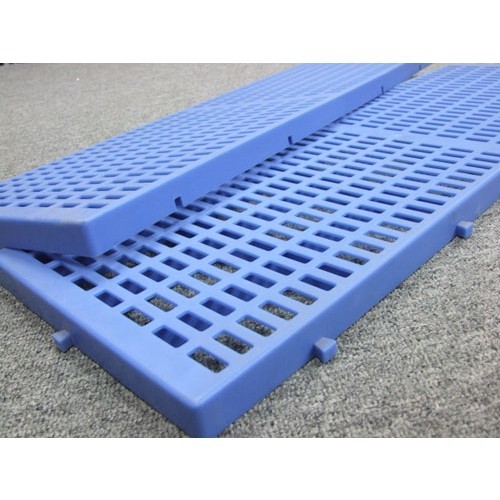Dog Run and Fencing Buying Guide
Author: Vebo Pet Supplies Date Posted:21 May 2020

First of all, let's get the terminology out of the way. In Australia, the term "dog run" is used fairly loosely, so where people say "dog kennel run", "dog kennel", "dog fencing" or "dog enclosure", they could be referring to the same thing. Please note that "dog kennel" is often confused with dog boarding kennel services or dog houses, so we generally prefer to use the term "dog run" more.
Not every dog will require a dog run, but if one of the following applies to you, there may be a good reason to put one in your home:
- Your backyard is not secure. Your dog is able to escape and is at risk of injuring itself or other people
- You have livestock, small pets or plants in your yard, and you would like to protect those from your dog
- Your dog is having behavioral issues. Nearly all dog trainers will require using an enclosure as part of the training
- It is required by council. E.g. you have a racing dog or dangerous breed
If the last one is applicable to you, you will probably need to speak to a professional fencing company as the requirement for a dangerous dog is quite strict and can differ from concil to council, therefore not many off-the-shelf products can meet their specific requirements.
So here are a few things you may want to consider when choosing a dog run for your home.
Size and Height of the Dog Run
Depends on the size and shape of your backyard, you can work out which is the best place to put it, therefore the maximum dimensions. As a general rule, bigger is usually better. However you will need to consider various factors such as:
- How long your dog spends inside. Obviously a run used to keep a dog for 10 hours a day should be bigger than one that is used for 2hrs a day. For small breeds, you may be okay with a 2m by 2m area. For medium dogs, you may want to consider at least a 3m by 2m area. For medium to large breeds, you might want at least a 4m x 2m or even 4m x 3m area.
- The purpose of the run. If it's due to council requirements, you will need to make sure the size matches council's minimum requirements. If it is for training a dog with behavioral issues, sometimes your trainer may not like a run that is too large.
Unless you have small dogs, it is generally recommended that your run should be at least 1.8m tall. Many bored dogs can become good acrobatic climbers, so it is a good idea to put a top to discourage them from trying, plus it can provide weather protection.
Different Types of Dog Runs
There are 2 main types of dog runs based on how the panel are constructed.
(1) Chain Mesh Dog Runs
This type are generally much cheaper (the DIY kits cost as little as $250) because chain mesh can be folded into a fairly small package, reducing both manufacturing and shipping costs. The down side is that they are difficult to setup and put away. They are also somewhat fixed in size / shape, so it's difficult to expand in the future. You can get an idea of how one of these is setup below:
Chain mesh are generally not as strong as (assuming same wire gauge) than welded wire panels, therefore they are generally not suitable for powerful breeds. If you are just looking for a simple run for a small/medium dog, with no intention to expand or change it up in the near future, you could consider a chain mesh dog kennel run.
(1) Welded Wire Panel Dog Runs
As the wiring are permanently welded onto a metal tube frame, this type of panels is more expensive to manufacture and ship, but welded panels are much stronger than chain mesh and is usually necessary for large breeds. For example, the wiring on our welded panels can easily withstand the weight of a 65kg person with minimal bending.
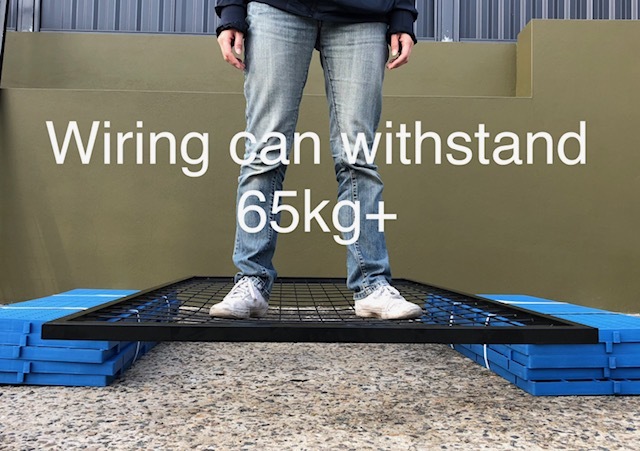
Because all the panels come fully finished, it's just a matter of joining them together so they are much simpler / quicker to build. Watch the video below to see how the panels are joined together:
Because this type of kennel run is built using individual wall panels, it offers more flexibility in terms of size and shape. You can virtually get as many or as little panels you like, and set them up in whatever shape you want. You can also easily add extra panels in the future to make it bigger or add extra bays on the side with extra panels / doors. For example, a 14 panel kit below can be setup in 3 different ways. All it takes is loosing the joints and rearranging the panels. It is also very simple to add extra panels to expand the run.
If you have a powerful dog, want something you can setup / pull apart quickly, with the flexibility to change the size and configuration later, the welded panel type could be an excellent option.
Sun and Rain protection
Australian weather can be very harsh, so unless your dog run is inside a shed or under a hard cover, you should either position your run under a large tree or look at installing a roof cover for the area to provide some sun and rain protection. Generally when there is a wild storm, you should consider keeping your dogs indoors either inside your home or your garage.
Flooring
If the area you plan to place your dog run setup has soft ground and your dog likes to dig, you need to be careful with putting your kennel there as your dog may be able to dig its way out. If your dog happens to be an expert digger, you can either put your dog run on concrete or install floor boards inside to stop the digging.
Or if the area does not drain well after rain and tend to stay wet for a long time, it's also a good idea to install floor boards inside to keep the dog dry. Some commercial boarding kennels like to put floor boards on concrete so they can simply hose the entire area without making it too wet in there.
Locks
Dogs are very smart creatires so make sure your run has good door latches and locks. Check to make sure the door has minimal flex so it does not bend when your dog push at the corners. Watch out for latches that could become undone if a dog pound on it from the inside.
Final Tip
Last but not least, a dog run simply does not replace basic training and common sense. You need to teach your dog that this run is a safe space for it. If you just throw a dog in there and lock the doors, your dog will fight for its life to try to get out, and because dogs are smart, so most of the time they will succeed! Any behavioral issues you were having will simply snowball into more serious problems. Much like crate training, you will need to introduce your dog to this space and let it know that this is a safe space using positive reinforcements. If you find your dog is turning into a little demon in there, you are not doing it right and you should consider approaching a professional trainer to help you.
At Vebo Pet Supplies, we stock both the chain-link and welded panel type dog enclosures and we carry a wide range of accessories such as roofs and floor panels. Check out our Outdoor Dog Kennel Runs section and feel free to contact us if you have any questions!

 Collapsible
Collapsible
